Muscle Clean: How To, Benefits & Variations
Unlock your full potential by engaging with our experts and community! Have questions about your fitness journey or looking for expert advice on weightlifting techniques? Don’t hesitate — leave a comment below and Oleksiy Torokhtiy will provide a personalized answer and insights to help you reach your goals.
Torokhtiy is reader-supported. Some links are affiliate links, and we may earn a commission at no extra cost to you. See our disclosure page for details.
It’s important to have an established fitness routine and it’s even more important to stick to it. But what happens when it gets boring and repetitive? You lose motivation and give up?
Of course not! You find ways to make it feel fresh and fun again, with new exercises like the muscle clean.
If you don’t really know what that is or you’re not sure how to do it correctly – we got your back. We’ll explain how to do it, what benefits you’re in for, how to include it in your regimen… Basically, everything you need to know.
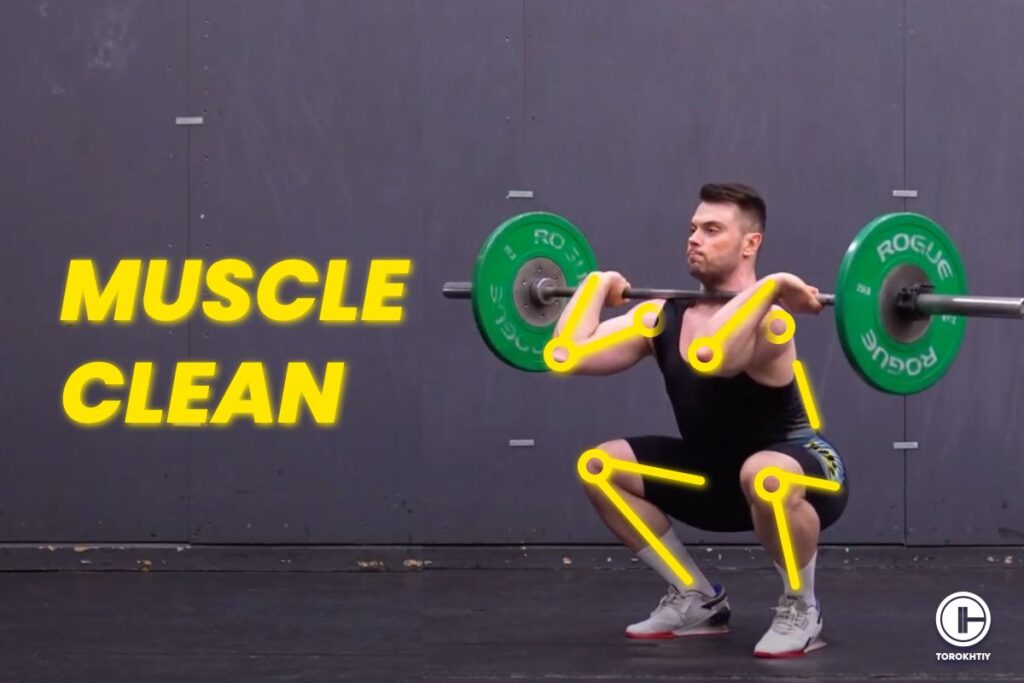
What Is the Muscle Clean?
In order to dive deeper into the movement, we need to understand what muscle clean is exactly. So, what is it?
The muscle clean is a weightlifting exercise that builds strength and power. Unlike the traditional clean, in which you squat, the muscle clean is done in one continuous pulling motion without dropping into the squat, so it’s simpler and less intimidating for beginners.
Its main purpose is to improve your ability to lift heavy weights from the ground to your shoulders in one fluid motion. It targets a lot of your muscle groups, like legs, back, shoulders, and arms, meaning you get a very well-rounded, comprehensive workout.
How to Do the Muscle Clean?
The muscle clean depends on precision, and we’ll break everything down in steps so you know exactly what to do.
1. Setup
Your feet should be hip-width apart and the barbell should be on the floor in front of you. Keep the shins close to the bar and your toes pointed out a little. Bend the knees and hips to grab the bar with a grip that’s slightly wider than shoulder-width.
Keep your back straight, chest up, and eyes looking forward.

2. First Pull
Extend your legs and lift the bar off the ground. Keep it close to your body and don’t round your back.
This phase is similar to a deadlift because its focus is on engaging your legs and core.
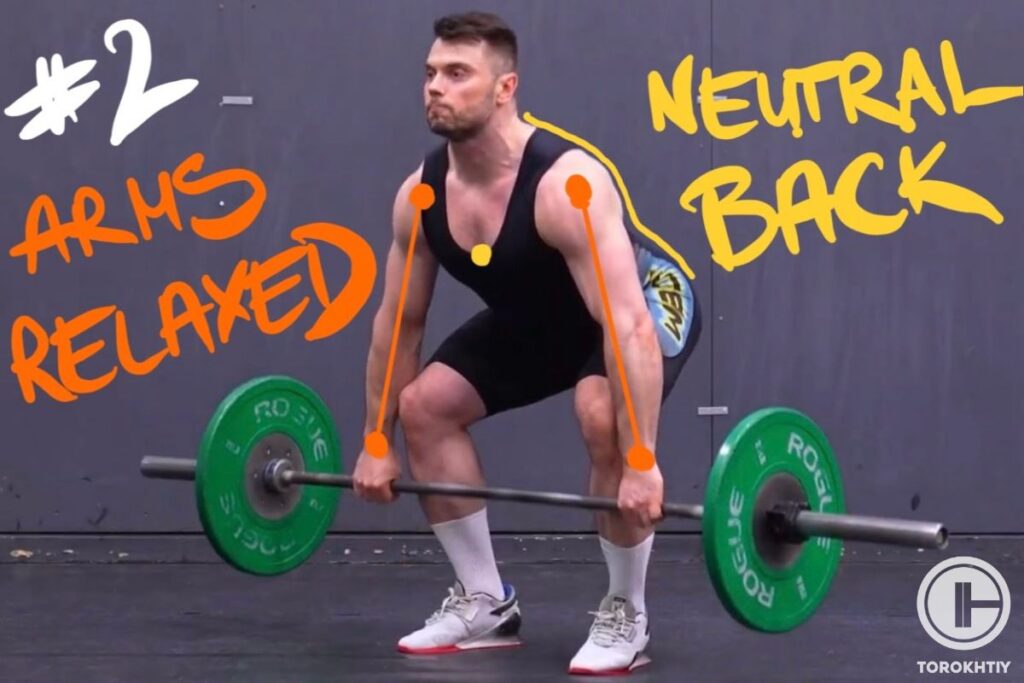
3. Second Pull
As the bar passes your knees, shift your torso to a more upright position.
This is the explosive part. Drive through your mid foot and quickly extend your hips, knees and ankles. At the same time, shrug your shoulders up and back and pull the bar up with your arms.
The goal here is to generate maximum upward momentum on the bar.
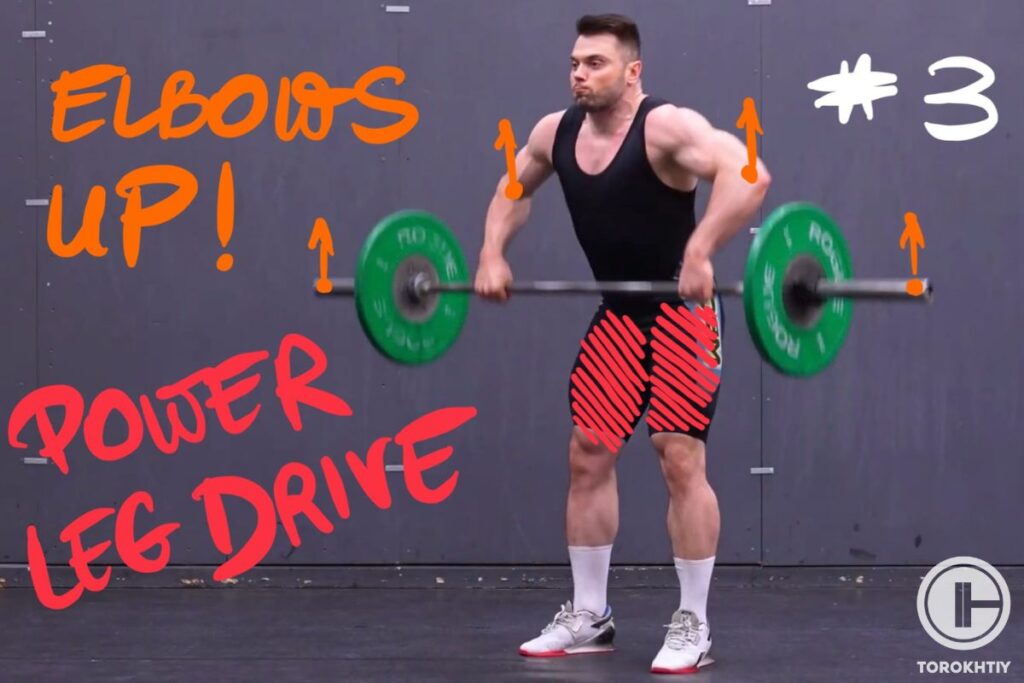
4. Catch
When the bar gets to peak height, rotate your elbows around and under it, and fluently place the bar on your shoulders. Unlike the traditional clean, you don’t drop into a squat – you stay upright and use the strength of your upper body to pull the bar into position.
Catch the bar on your shoulders with elbows high and forward. Your wrists need to be flexible and, if it’s necessary, the bar can even rest on your fingertips.
Stand tall, keep the core engaged and feet planted firmly.

5. Lower the Bar
After you’ve secured the bar in the rack position, it’s time to lower it back down. Do this in a controlled way and make sure to keep your form correct to avoid injuries.
That’s it! Now prepare for the next rep.
Save it for easy access!
Bookmark this page now to access the program and instructional videos anytime, anywhere.
Stop wasting time searching during your gym sessions.
A Sample Muscle Clean Program
| Level | Reps | Sets | Frequency |
|---|---|---|---|
| Beginner | 3-5 | 3 | 2 times per week |
| Intermediate | 3-5 | 3-5 | 2-3 times per week |
| Advanced | 3-5 | 5 | as many as needed |
Beginner
- Reps: 3-5 reps
- Sets: 3 sets
- Frequency: 2 times per week
- Progression: Your focus is mastering the form, so you won’t lift heavy. Use an empty bar or super light weights and master the technique first. Once that’s done, you can start increasing the weight in 5-10 lbs increments.
Intermediate
- Reps: 3-5 reps
- Sets: 3-5 sets
- Frequency: 2-3 times per week
- Progression: You can start increasing the weight to where it’s challenging, but still manageable; correct form is always a priority. Start doing variations like hang muscle cleans or power cleans to challenge different aspects of the lift and keep your training dynamic.
Advanced
- Reps: 3-5 reps
- Sets: 5 sets
- Frequency: as many as needed
- Progression: Focus on maximizing power and explosiveness. Incorporate heavy lift days and lighter ones that concentrate on technique so you can fine-tune your form. Push your limits with supersets or pyramid sets. Include muscle clean in your oly lifting complexes!
Follow us!

Free!
Get a 2-week Weightlifting Program as a bonus for the subscription to kickstart your training plan!

Free!
4 Common Muscle Clean Mistakes
Even pros make mistakes, but it’s good to know what the most common ones are and how to prevent them.
❌ Incorrect Setup
If you start with your setup being incorrect, like feet too wide or too narrow, improper grip on the bar, etc., it might not carry over to your clean performance as it should. The correct setup exists for a reason – to give you a stable base and efficient power transfer.
❌ Rounding the Back
This can result in a serious injury. Always keep your back straight and core engaged. Your spine should be in a neutral position the entire time to protect your lower back.
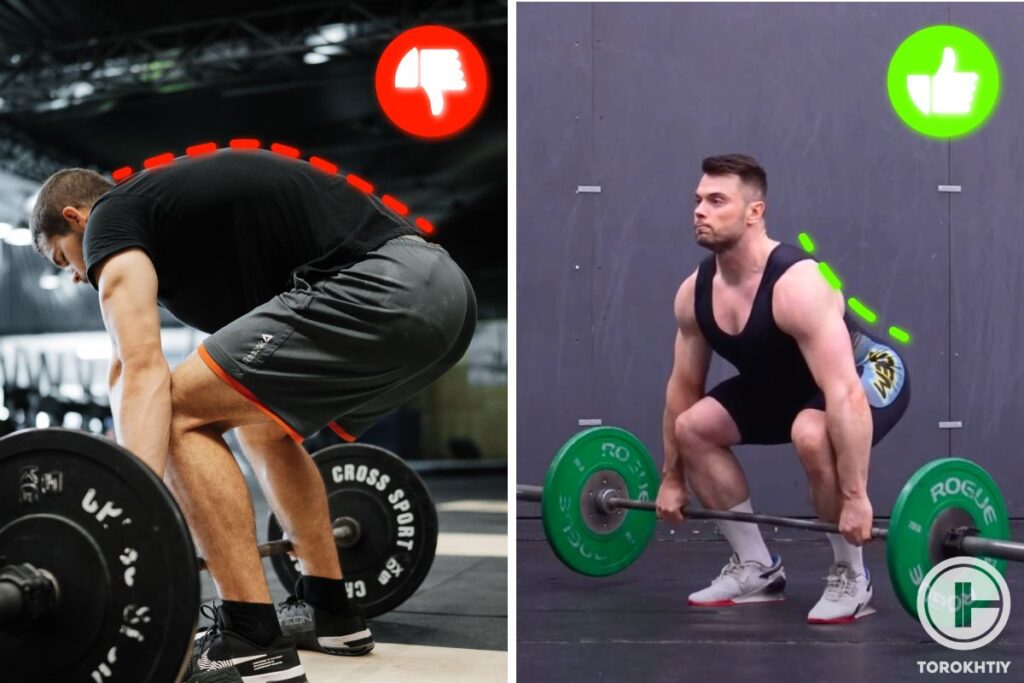
❌ Using the Arms Too Much
You’ll see this with a lot of people, especially beginners, they’ll rely on their hands to lift the bar. But your legs and hips should provide the majority of the power to lift the bar. Try to generate momentum from your lower body and use your arms to guide the bar, not lift it.
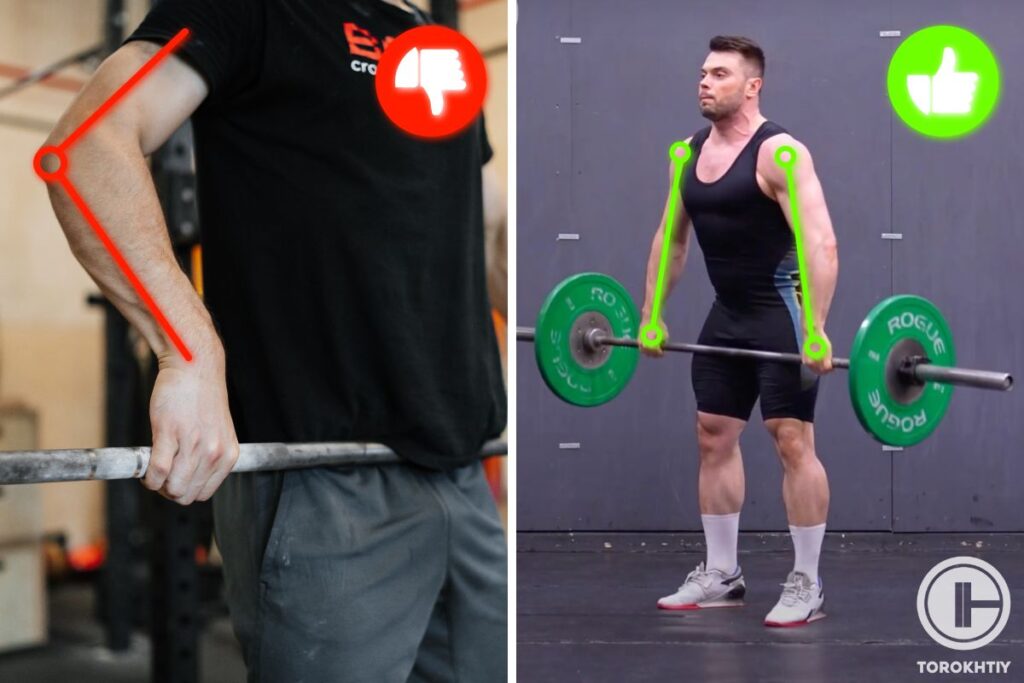
❌ Not Warming Up
You might be pressed for time or you might think you can do without it. Whatever the case, you should never skip the warm-up because it will mess up your performance and it can lead to injuries.
4 Benefits of Muscle Clean
There are a lot of muscle clean benefits, but we’ll go through the most important ones.
✅ Builds Explosive Power
The muscle clean is an excellent way to develop explosive power. It needs fast hip and knee extension, which will (over time) make it easier for you to generate force quickly. This is great for weightlifting, of course, but also for sports and activities that rely on bursts of power, like sprinting, jumping, and throwing.
✅ Improved Full-Body Strength
The muscle clean targets many different muscle groups at the same time, and because you can load it properly it can promote overall strength development. It’s a very efficient way to build a strong, balanced body.
Tips From the Champ
Focus on a smooth and quick turnover to efficiently catch the bar in the front rack position, enhancing your overall technique. Use the drill below as a warmup for a better clean setup.
Olympic Weightlifting Champion
✅ Better Coordination & Balance
If you want to do the muscle clean properly, your lower and upper body need to be coordinated and work together. It can be tricky at first, but if you keep working, not only will you master the muscle clean, but you’ll also improve your overall coordination, balance, and body awareness.
✅ Improved Bone Density
The muscle clean is a weight-bearing exercise, and those will do wonders for your bone density. They maintain the health and strength of your bones, plus they promote the growth of new bone tissue. This is important in general, but it’s particularly important in terms of preventing osteoporosis.
2 Muscle Clean Variations
You might want to work on specific aspects of the lift or you might just want even more variety. Either way, variations are what you need.
1. Hang Muscle Clean
This variation starts from a standing position with the bar at your thighs instead of the floor. You bend a little at your hips and knees and let the bar hang above the floor (below or above your knees).
From here, do the muscle clean. The hang muscle clean focuses more on the second pull and helps you improve your ability to generate power from a different position.
2. Muscle Clean and Press
You do the normal muscle clean, but then you keep going; press the barbell overhead from the rack position until your arms are totally extended. You get the benefits of the muscle clean and overhead press, so your workout ends up engaging your whole body.
This variation is an excellent way of building strength in your upper body and shoulders.
3 Muscle Clean Alternatives
You can never have too much variety, so let’s see what you can do if the variations are too similar to the muscle clean for your liking.
🔻CLEAN CYCLE Program
Crush Your CLEAN PR in 5 Weeks! 🏋️
Achieve:
- 🏅New CLEAN Records.
- 💪Master CLEAN variations.
- 🏋️♂️Focus on back and leg strength.
- 🎯Specific skills and drills for your CLEAN.
Highlights:
- 📆 5 Days / Week
- ✅ Varied Lifts
- 💪 Strength & Technique
- 🔥 Healthy Warm-Ups
Elevate your CLEAN game today! 💥
1. Dumbbell Muscle Clean
Grab a pair of dumbbells, set the barbell aside, and do the normal muscle clean. This alternative mimics the movement pattern of the muscle clean and it’s ideal for people that struggle with muscle imbalances because this can help take care of them. They can cause injuries, so make sure to handle them ASAP.
2. Sandbag Clean
For the sandbag clean, you lift a sandbag from the floor to your shoulders in one explosive motion. It’s another way to mimic the movement pattern of the muscle clean, but you get an added challenge from handling unstable load.
3. Muscle Snatch
Lift the barbell off the ground to overhead in one continuous motion – start from a squat with the bar in front of you, drive it up, and finish by pressing it overhead with straight arms.
It’s a great alternative to the muscle clean because you still get the benefits like improved shoulder stability, stronger upper body, and better coordination.
Who Should Do the Muscle Clean?
You saw the benefits, so if any of them seem appealing, give the muscle clean a try. But aside from the general population, there are certain groups of people the muscle clean is particularly good for.
1. Athletes
Since it develops explosive power and strength in general, athletes should definitely include the muscle clean into their routine. You could be a sprinter, a football player, a soccer player, a basketball player… If your sport needs quick bursts of power and/or strong tackles, you need the muscle clean.
2. Weightlifters
You probably guessed this one by yourself since it is a lift after all, but weightlifters should consider the muscle clean because it can improve their clean technique. It will help develop the strength and power that are needed for the clean and jerk and snatch, so it’s an excellent way to refine form and even increase lifting capacity.
3. Fitness Enthusiasts
People who are looking to improve their overall fitness could use the muscle clean as a tool to build their strength, power, and coordination. It’s dynamic, it can help break the monotony everyone struggles sooner or later, and it will make the workouts more engaging. The good thing about it is the learning curve is much easier compared to other Clean versions.
Muscles Worked by the Muscle Clean
The muscle clean pays most of its attention to your lower body, especially the quads, hamstrings and glutes because those are the muscles that generate the power you need for the explosive lifting phase.
But apart from them, it also engages the muscles in your back which stabilize and help lift the barbell. The shoulder muscles (especially the deltoids) are engaged, too, as they help raise the bar to the rack position.
Of course, we can’t forget the arms – they control the bar throughout the movement.
Conclusion
Embrace the challenge, reap the rewards, take your workouts to the next level… We could end all of this on a dramatic note to nudge you in the right direction and persuade you to give the muscle clean a try. But that’s not necessary, is it?
This is an exercise that engages pretty much your entire body, has both health and performance benefits, and it can make your routine feel fresh and new. So… you see why you shouldn’t need persuading?
Have you tried the muscle clean or any of its variations? How do you keep plateaus at bay? Is there anything you found particularly challenging with the muscle clean?
Leave your comments, thoughts, constructive criticism, and whatever else you can think of in the comment section below!
References:
- Health Promotion Board (HPB) “Prevent Injuries with Proper Form During Workouts,” Singapore University Health Center, https://www.nus.edu.sg/uhc/articles/details/prevent-injuries-with-proper-form-during-workouts (accessed June 25th, 2024)
- Hyoung-Kil Park, Min-Kyung Jung, Eunkyung Park, Chang-Young Lee, Yong-Seok Jee, Denny Eun, Jun-Youl Cha, and Jaehyun Yoo. “The effect of warm-ups with stretching on the isokinetic moments of collegiate men.” Journal of Exercise Rehabilitation 14, no. 1 (2018): 78–82.
- “Prevention Osteoporosis,” National Health Service, https://www.nhs.uk/conditions/osteoporosis/prevention/ (accessed June 25th,2024)
- “Slowing bone loss with weight-bearing exercise,” Harvard Health Publishing, https://www.health.harvard.edu/staying-healthy/slowing-bone-loss-with-weight-bearing-exercise (accessed June 25th, 2024)
- Venkat S. R. “What Are Muscle Imbalances?” WebMD, https://www.webmd.com/fitness-exercise/what-are-muscle-imbalances (accessed June 25th, 2024)
- Photos by Torokhtiy Media Team.
Why Trust Us?
With over 20 years in Olympic weightlifting, strength training, nutrition coaching, and general fitness our team does its best to provide the audience with ultimate support and meet the needs and requirements of advanced athletes and professional lifters, as well as people who strive to open new opportunities and develop their physical capabilities with us.
By trusting the recommendations of our certified experts in coaching, nutrition, and sports training programming, as well as scientific consultants, and physiotherapists, we provide you with thorough, well-considered, and scientifically proven content. All the information given in the articles concerning workout programming, separate exercises, and athletic performance, in general, is based on verified data.
The product testing process is described in more detail here.
Author: Oleksiy Torokhtiy
Olympic Weightlifting Champion
Best Results: Snatch – 200 kg,
C&J – 240 kg
Oleksiy Torokhtiy is a professional athlete boasting 20 years of experience in Olympic weightlifting. With multiple European and World titles under his belt, he has showcased his prowess in two Olympic Games (Beijing 2008 and London 2012). Upon concluding his illustrious career, Oleksiy dedicated himself to coaching. By 2022, he had conducted over 200 weightlifting seminars worldwide. He is the visionary behind an international sportswear and accessories brand known for its motto, “Warm Body Cold Mind.” Additionally, he is an esteemed author and the creator of a series of training programs and eBooks.



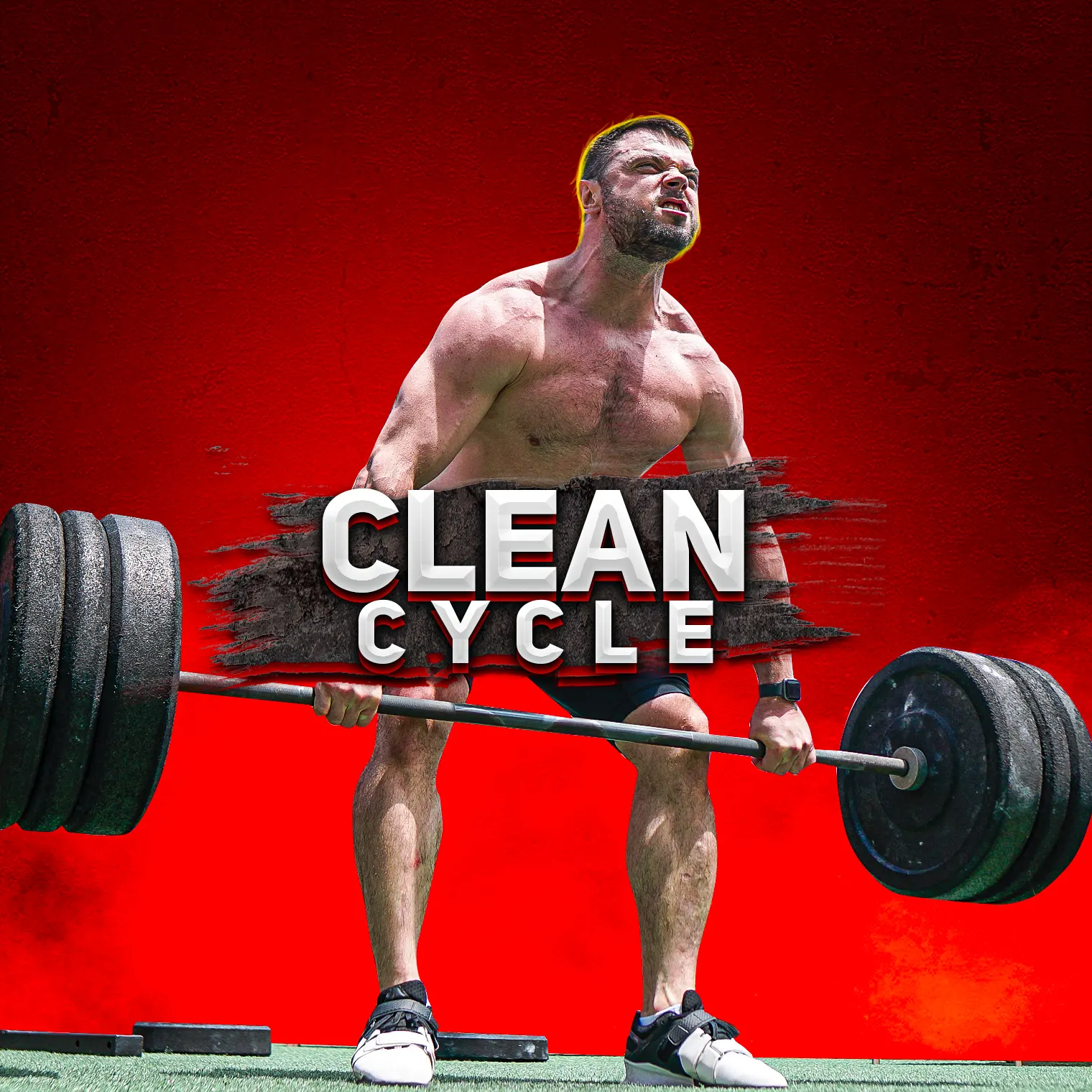

Still have questions after reading our article? Unlock your full potential by engaging with our experts and community! Don’t hesitate — leave a comment below and Oleksiy Torokhtiy will provide a personalized answer and insights to help you reach your goals.